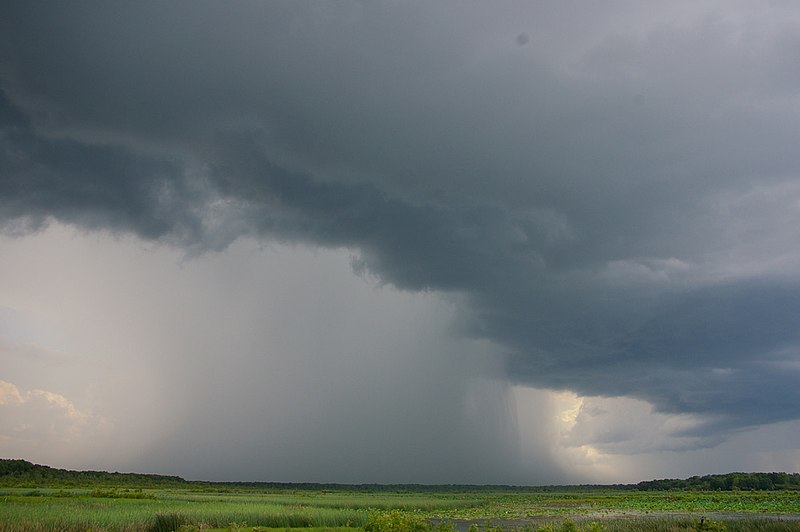Learn how to file a Homeowners Insurance Claim after a storm

Did you know that California is the top state for natural disaster-related insurance claims in the U.S.? With its earthquakes, wildfires, mudslides and extreme weather related to climate change – homeowners may have become all too familiar with filing insurance claims. If a storm has recently caused damage to your home or property, it’s important to learn how to file a claim so you can get the help you need and protect your family from further destruction and financial hardship. In this blog post, we’ll provide helpful information on what to do when filing a homeowners insurance claim after a storm.
Steps to file a claim
Contact Your Insurer
Your first move: Reach out to your homeowners insurance agent. Your policy requires you to file a claim in a timely manner, and that starts with contacting the insurer. But that contact can also help you get financial help right away, beyond the assistance offered by nongovernmental agencies, your state, or the federal government.
Many displaced victims of Hurricane Ian, for instance, could get money from their homeowners insurance companies immediately—without the usual paperwork—to help with the cost of living elsewhere. That coverage, standard in most homeowners’ and renters’ policies, is called additional living expenses (ALE) insurance. After recent major disasters, most homeowners insurance companies haven’t been requiring documentation of home damage before sending initial checks to policyholders, says Michael Barry, a spokesperson for the Insurance Information Institute, an industry group.
“Some insurers may ask for proof that a home is not inhabitable, but they are in the minority based on what I have seen,” Barry says.
You will eventually have to document the damage, but in the interim, ALE can help you cover costs like temporary housing, restaurant meals, laundry, extra commuting expenses, and pet boarding. It can also help with expenses when you’re dislocated because of mandatory evacuation orders—even if your own home is accessible and fine to live in.
Aside from ALE, you’ll typically need to document your property damage to initiate a visit from an adjuster (the professional who assesses the costs of repairing, restoring, or rebuilding). If you can’t access your property, it might be worth contacting your insurer to see whether it’s using drones to conduct initial damage assessments. That could help expedite the process.
Do the Stopgap Work
The insurer can advise you about what repairs you should make right away to make your home habitable or to prevent further damage.
Get Your Coverage Details
When you contact your agent or insurance company, find out what’s covered in your policy. You can also probably find it on your account page on the insurer’s website.
A standard homeowners insurance policy covers damage to the home’s structure as well as personal property, minus a deductible. The amount you’re paid will depend on the kind of coverage you have. “Replacement cost” coverage should pay for the cost of repairing or replacing your home and any lost or damaged items at today’s prices—without accounting for the original items’ depreciation. “Actual cash value” coverage will pay you the value of your home and the damaged items inside, after depreciation has been taken into account.
Prepare for the Adjuster
The insurance company will assign an adjuster, who will assess the damage and submit an estimate for review. Since the beginning of the pandemic, adjusters have increasingly been doing their work remotely—communicating through smartphone tools like FaceTime, Google Meet, and Skype—and accepting videos and photos directly from policyholders’ phones.
During the appointment, the adjuster may ask you to walk from room to room taking video with your phone, describing the damage and showing it in context and scale by zooming in and out.
But if you’re not comfortable meeting virtually—or the damage appears to be considerable and severe—you can ask the insurer to have an adjuster come to your home.
If that’s the case, ask the insurance company for the adjuster’s name before your appointment, then ask for identification before letting the person into your home.
Regardless of whether your adjuster’s visit is conducted virtually or in person, it helps to make a list of items that were destroyed or are in need of repair. Include the amount you paid for them and gather any receipts you can find.
You can report more damage you discover after the adjuster’s appointment. Depending on the policy, a claim can stay open—and you can receive additional compensation—for many months after the initial report.
Document All Your Transactions
After the adjuster’s appointment, remain in contact by email or text so that you have backup of all your communication. Keep notes about missed appointments, unreturned phone calls, what you discussed, and even whether the adjuster was rude. Though you probably won’t need this information, it will be useful if any disagreements have to be resolved in court.
Make copies of all documents, including everything you give to the adjuster, such as your list of property lost or damaged. If the adjuster advises you to get repairs, get that permission in writing.
In an emergency situation, the first adjuster may be replaced by a new one during the claims process, so having correspondence in writing could be helpful to you.
Discuss Exclusions or Limits in Your Policy
After the appointment, the adjuster or a company representative may give you a better idea of what the insurer intends to pay for the entire claim. If your insurer maintains that your policy doesn’t cover all the damages or if you think the compensation is too low, ask the carrier’s rep to explain in writing how they got to the estimate. The rep should also include any reason certain items aren’t covered and whether there are any coverage limits.
If you have custom work in your house, an adjuster might not know how to properly estimate the value. Get an outside estimate from a contractor.
If you think the wording in the policy is misleading, contact a local plaintiff’s attorney who specializes in insurance law. The Consumer Federation of America says courts have consistently ruled in favor of policyholders on policy ambiguities. File a complaint with your state’s department of insurance.
Need more help to file a claim? Contact Us today
Embrace the advantage
Be the first to receive exclusive news, tips, and discounts straight to your inbox. Don't worry, we don't spam.
Get Started Today!














